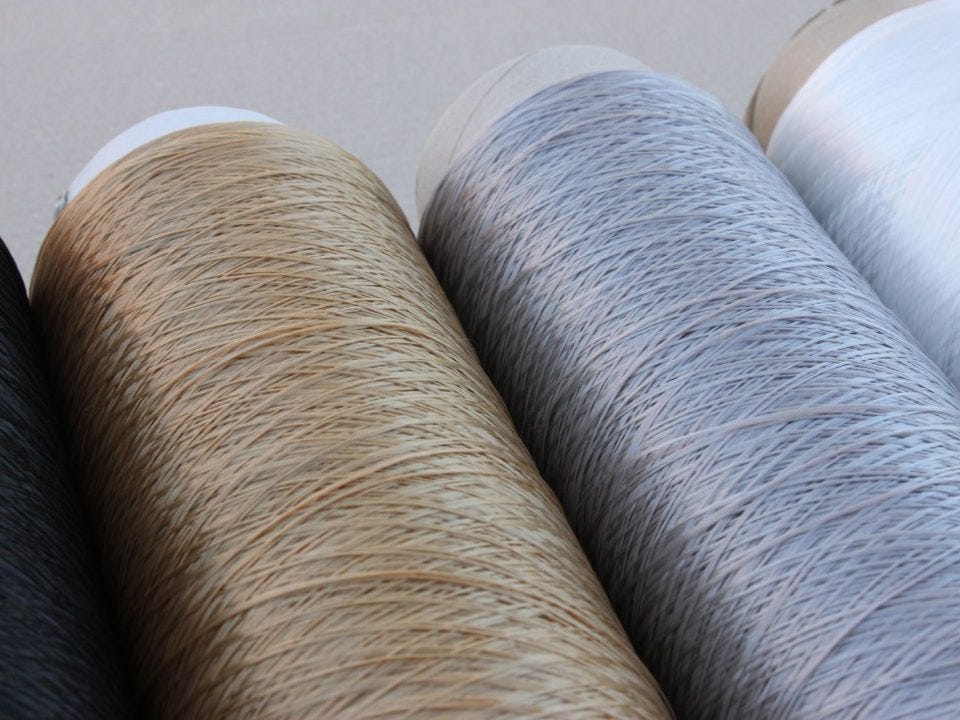India's synthetic yarn industry weaving a path to growth

India's synthetic yarn market is poised for significant growth, driven by numerous factors. Industry reports suggest, Indian synthetic yarn market is estimated at Rs 70,000 crore ($9.3 billion) and is projected to reach Rs 1,00,000 crore ($13.3 billion) by 2027, with a CAGR of 7-9 per cent.
Currently, India holds a modest 5-6 per cent share of the global synthetic textile market. Strategic investments, technological advancements, and a focus on sustainability are crucial to improve India's global standing. Production hovers around 1.3 million tonnes annually, with consumption slightly exceeding that figure. This indicates a dependence on imports, particularly for high-performance yarns. Polyester filament yarn is the leading export touching over $1.34 billion in 2021-22 followed by bulk containers. However, exports have witnessed a recent decline.
Growth projections are promising as the demand for polyester filament yarn (PFY) is expected to move forward at CAGR of 15-20 per cent, driven by rising global textile fiber demand. Polyester filament yarn dominates the market, followed by spun yarn; polyester yarn accounts for roughly 77.5 per cent of market share. Nylon, Rayon, and Acrylic follow closely.
Key growth drivers
Growth in India’s synthetic yarn market is being driven by several factors.
Rising demand: The apparel and home furnishings sectors, major consumers of synthetic yarn, are experiencing a boom due to growing disposable incomes and urbanization.
Government initiatives: The government's focus on boosting the textile sector through schemes like the PLI (Production Linked Incentive) scheme aims to incentivize domestic production of synthetic yarns, reducing import dependence.
Technological advancements: Adoption of advanced technologies for efficient production and development of new, functional synthetic yarns will enhance product appeal.
Technical textiles boom: The increasing use of technical textiles in diverse sectors like aerospace, automotive, and healthcare is creating new avenues for specialized synthetic yarns.
Despite the positive growth drivers many factors are affecting the market. Import dependence is one of them as India lags behind in advanced yarn manufacturing capabilities, necessitating import substitution. Volatility in raw material prices too can disrupt market stability. Growing environmental awareness necessitates a shift towards sustainable production practices and development of eco-friendly synthetic yarns. Hence developing eco-friendly synthetic yarn production processes is crucial. China's dominance in synthetic yarn production poses a significant challenge. India needs to focus on cost competitiveness and product innovation.
The domestic market for synthetic yarn is vast and offers immense potential. Therefore, increasing domestic production to meet rising demand presents a significant opportunity. At the same time India can become a global leader in synthetic yarn exports by focusing on high-value, technical textiles and leveraging Free Trade Agreements (FTAs).
Future Outlook
India's synthetic yarn market is on the cusp of significant growth. With a focus on overcoming challenges and capitalizing on opportunities, India can become a self-sufficient and globally competitive player. Reports project a promising market size, with textile production targeted to reach $250 billion by 2030. By addressing challenges, embracing innovation, and leveraging strategic government initiatives, India can weave a stronger future for its synthetic yarn industry.
